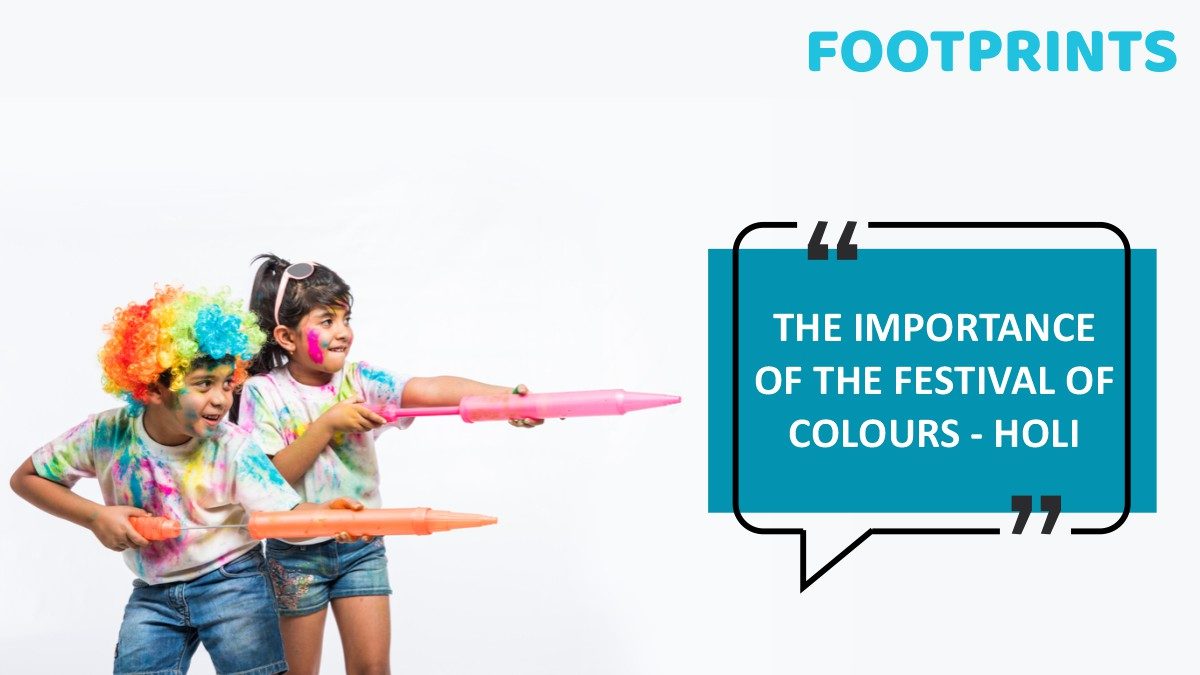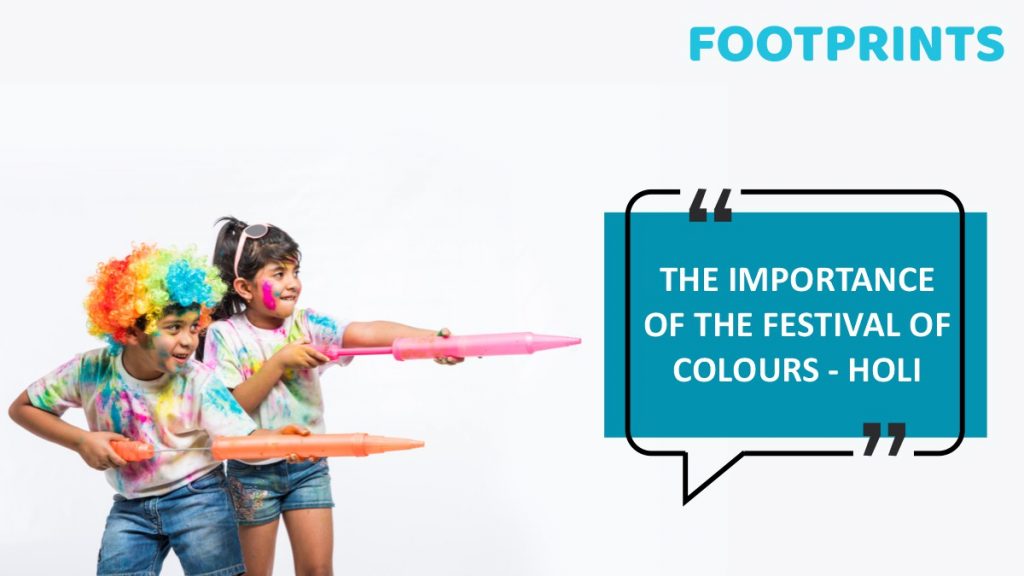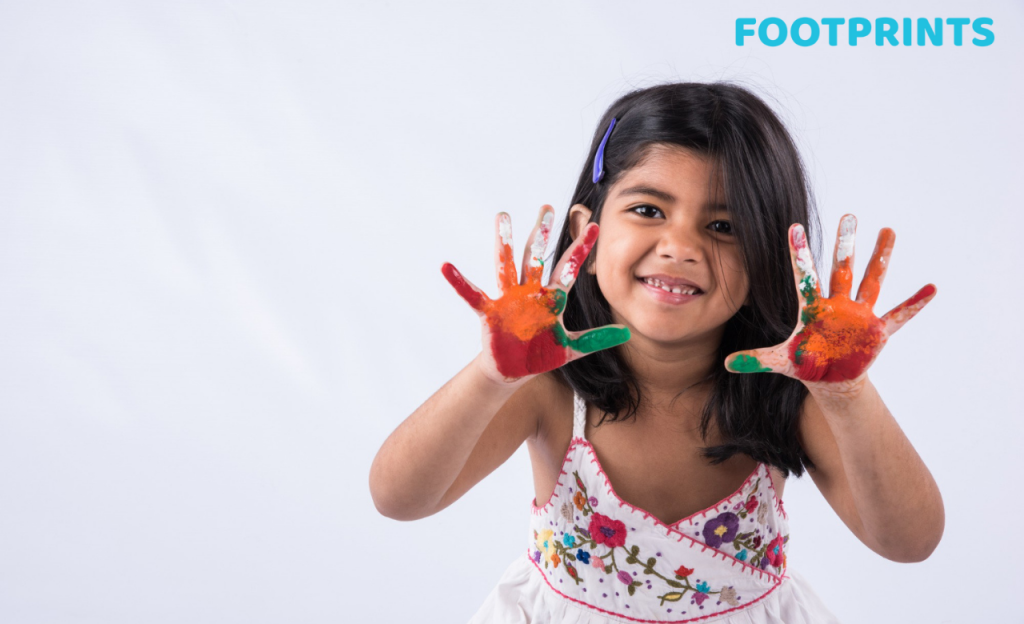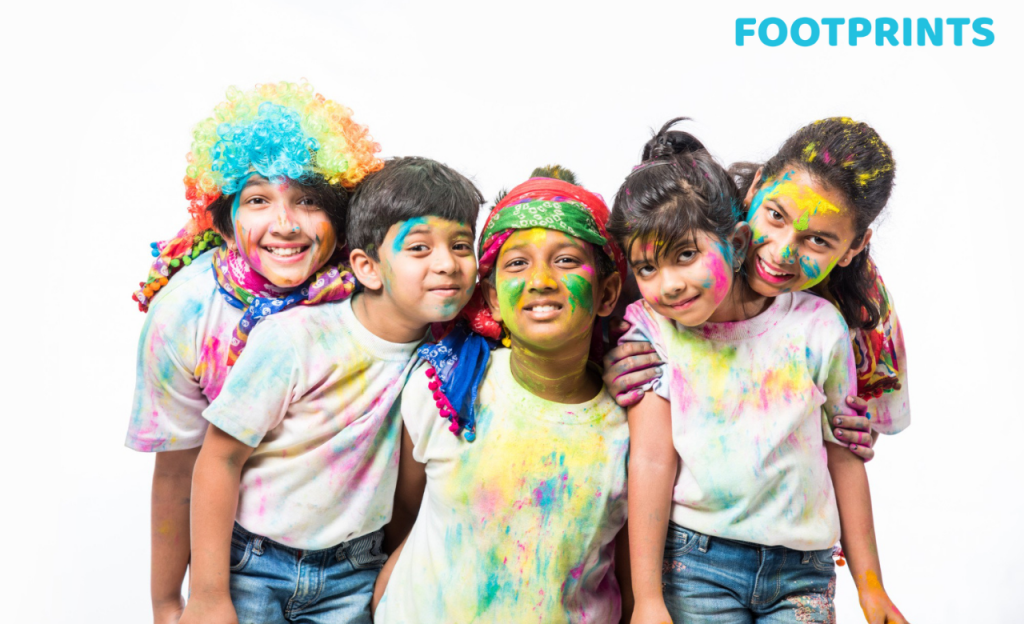

As we approach the vibrant festival of Holi, chances are your preschooler is bubbling with excitement. Who can resist the joy of playing with an array of colors, splashing water, and more? Left to their own devices, children would probably want to celebrate this festival year-round. Filling water balloons and pichkaris, having endless fun, their laughter echoing like heavenly music.
As you gear up for the lively festivities of Holi, it’s a great idea to engage your child in a conversation about the significance of the festival and its meaning. Beyond the revelry, each festival carries valuable lessons, and it would be wonderful for your child to grasp the deeper meaning behind the fun and games. Let’s explore these lessons together.
Why do we celebrate Holi?
The festival of Holi, which largely falls during February and March every year, comprises of two events:
- Holika Dahan
- Dhulivandan or Rangwali Holi
Holika Dahan, observed on the eve of Dhulivandan or Rangwali Holi, involves the ceremonial lighting of a bonfire, symbolizing the triumph of good over evil. According to legend, Hiranyakashipu, a demon king in ancient India, sought to kill his son Prahlad, a devoted worshiper of Lord Vishnu. Hiranyakashipu enlisted the help of his sister, Holika, who possessed a boon protecting her from harm in fire. In a sinister plot, she was instructed to sit in the flames with Prahlad on her lap. Miraculously, Prahlad emerged unscathed, while Holika perished in the fire. Subsequently, Lord Vishnu vanquished Hiranyakashipu. It’s believed that Holika sought forgiveness from Prahlad before her demise, and he declared her remembrance each year during Holi. Hence, the ritual burning of Holika is commemorated as Holi throughout India.
You can utilize this narrative as a catalyst for a meaningful discussion on the dichotomy of good and evil, emphasizing the consequences that ensue based on the paths chosen. It’s crucial to underscore that, although evil may achieve short-term victories, goodness invariably prevails in the long run. These coaching moments play a pivotal role in instilling the right values in children.
Holi is additionally intertwined with the tale of Radha and Krishna. Legend has it that Krishna, a revered incarnation of Vishnu, fell in love with the milkmaid Radha. Despite Radha’s fair complexion and Krishna’s darker skin, he playfully adorned Radha’s face with colors. This playful act is believed to be the origin of the tradition of throwing colors and water during the festivities.
In the southern part of India, the narrative of Shiva using his third eye to burn Kamadeva is also prevalent. In rural Tamil Nadu, the tradition includes burning effigies of Kamadeva.

Significance of Holi
It would be pertinent to explain to the child that Holi is recognized as a spring festival, coinciding with the readiness of fields for harvest. Seizing this moment offers an excellent opportunity to discuss with children the vital roles farmers play in our lives and the tremendous effort they invest in providing us with food. This discussion can naturally transition to the importance of avoiding food wastage.
It would be prudent to discuss with children the significance of festivals like Holi, which are renowned for fostering unity among people. Holi serves as a platform for individuals to come together, thereby fortifying relationships. In an era where many of us reside in nuclear family setups, events such as Holi serve as poignant reminders of the strength of community and the essence of brotherhood. The festival also instills a sense of forgiveness and interconnectedness. This can initiate a meaningful conversation about the value of letting go of grudges and moving forward, a vital life skill that, when instilled in children early on, equips them to navigate life with grace. Early exposure to the concept that harboring resentment only perpetuates pain, while forgiveness leads to peace and hope, can shape their perspective.
Holi also holds significance in terms of overall health and well-being. The traditional bonfire during Holi is believed to purify the air, and the act of cleaning houses adds to the positive atmosphere. Subsequently, the festive revelry and laughter, accompanied by the playful use of colors, contribute significantly to maintaining mental happiness.
As you enlighten your child about the multifaceted aspects of Holi, it is imperative to emphasize the importance of safety while partaking in the festivities. Some key areas to be mindful of include:
- Opting for organic, non-toxic colors that are gentle on the skin is recommended.
- It is essential to enlighten children about the potential harm caused by forcefully throwing balloons at unsuspecting passersby, as it can lead to serious injuries.
- Providing guidance to children on the significance of consent and discouraging any attempts to impose actions on others will prove beneficial not only during Holi but also in the broader context of life.

At Footprints Playschool, a chain of preschools spanning across India recognized as a preferred partner in parenting, our focus lies in fostering the comprehensive development of children. Beyond instilling pre-academic skills, we place considerable emphasis on equipping children with essential life skills that empower them to navigate life’s complexities. Moreover, we are committed to ensuring that children embrace the rich tapestry of diverse cultures prevalent in India. To achieve this, we expose them to various festivals celebrated throughout the country, fostering an appreciation for cultural diversity. Our ultimate goal is to nurture an empathetic generation that values and respects this diversity.
In the year 2024, the auspicious date of Dhulivandan is set for March 25th! Here’s extending warm wishes to all for a joyous Holi celebration!

Purvesh is a multidimensional leader at Footprints Childcare. As a TED speaker and IIT-Delhi alumnus, his passion for education is fueled by his experiences as a certified life coach and parent. He goes beyond traditional parent engagement activities, creating meaningful connections through insightful parenting workshops and open communication channels. Purvesh’s commitment to empowering parents, teachers, and students is the foundation of everything we do at Footprints. What motivates Purvesh? As a parent himself, the challenges his son faces in the educational system are the driving force for him.

